The backyard of the average suburban home is an open space that is sitting there begging to be used for prepping. One such way you can utilize your backyards for prepping and survival is to bury barrels in them. But why would anyone want to bury a barrel in their backyard? There are several reasons why you would want to do this, and for the most part, all you need is a barrel and a shovel to get started.
Before You Get Too Carried Away
There are a few things to consider before you start digging holes. First and foremost, of these is whether or not there are any electrical or gas lines running underneath your feet.
Most municipalities have a number you can call to check for utility lines before digging, and skipping this step could turn a simple project into a mistake. But that’s just the beginning. There are many things the authorities don’t want you to do when you’re prepping your homestead for a crisis.
Why? Because real self-reliance threatens their control. That’s why you need to dig deep – pun intended – into trusted sources like this guide to understand both the legal risks and how to outfox the feds when it matters most. And once you’re cleared to dig, be absolutely certain you know exactly what you’re driving your shovel into… because one wrong strike can change everything.
Is the ground rocky, sandy, or clay? How high is the water table? What is the drainage like? How deep is it possible to dig? These are all questions that you will need to answer.
If the ground is unsuitable for digging a deep enough hole, then burying a barrel is not a realistic option for you. Likewise, if the water table is too high, burying a barrel is not a good option because you do not want it sitting in water.
What Kind of Barrel?
When it comes to the type of barrel, you have two main choices: steel or plastic. Steel barrels are stronger but will eventually rust even if they are painted. This does not mean that a steel barrel is unsuitable; it only means that you need to be diligent in protecting it from rust.
Related: Blue Barrel Uses You Never Thought Of
Plastic barrels do not rust, but they are not as strong as those made from steel. Eventually, rodents will be able to chew their way through the sides of the barrel, so if this is a concern for you, steel may be a better option.
Look for barrels that have a removable top so you can easily access the contents and keep everything secured and water-tight.
How to Bury a Barrel
Start by digging a hole a little larger than the diameter of the barrel. As for the depth, measure the height of the barrel and add about a foot or so to that measurement. Excavate the hole until it is at the right depth with a flat bottom and straight sides.
Related: 15 Survival Uses for Bentonite Clay
Line the bottom with landscape fabric and fill with a six-inch layer of gravel to allow for drainage. Place the barrel in the hole, making sure there is at least six inches of space between the top of the barrel and the surface of the ground. Once the barrel is in place and filled, lay landscape fabric over the top and fill in with dirt and sod.
Underground Caches
You may be noticing that you are running out of room in your home for all your preps. This is where making some caches in the backyard can come in handy. When loading an underground cache, prepare everything that goes inside as if it will be exposed to water. There is never a guarantee that the barrel will always be impervious to water ingress, so grease everything that can rust and vacuum-seal everything else.
Related: Read This Before Stockpiling Water In Blue Barrels
Faraday Cage
If you bury a steel drum, it will act as a Faraday cage, but you’ll need to make a few modifications. A Faraday cage isolates the electronics inside from the electromagnetic energy of an Electromagnetic Pulse (EMP). You can place any electronics that you want to use after the grid is taken out by an EMP.
Before you place anything inside the barrel, you need to ensure that there is insulation between the metal of the barrel and the electronics inside. Line the interior with anything that is non-conductive, this could be cardboard, foam insulation, or anything else that you have on hand. Whatever you use must be non-conductive.
Maximize EMP-Proofing
When you are placing items inside the barrel, you can also place those items inside their own Faraday cages or bags as an extra redundancy.
Once you secure the lid seal it with metal tape as an added layer of security.
Related: What No One Told You About Faraday Cages
You can also use a plastic barrel as a Faraday cage, but you need to either enclose all the electronics placed in the barrel in their own Faraday bags or cages or line the inside of the barrel with EMP cloth. As with the metal drum, you need to insulate everything inside the barrel from the conductive EMP cloth.
 In the event of an EMP attack, many of your most valuable devices and assets could be completely destroyed. Total annihilation. And we’re not just talking about things you could live without, like a smartwatch or an electric chainsaw. We’re talking about essential tools tied to your ability to move, escape danger, communicate, and access information. All of these could be rendered useless in an instant.
In the event of an EMP attack, many of your most valuable devices and assets could be completely destroyed. Total annihilation. And we’re not just talking about things you could live without, like a smartwatch or an electric chainsaw. We’re talking about essential tools tied to your ability to move, escape danger, communicate, and access information. All of these could be rendered useless in an instant.
Some of the most vulnerable devices during an EMP attack are your laptop, cell phone, radio, and your credit cards.
Yes, you read that right. Even your credit cards could be wiped out, cutting off access to your money when you need it most. And it doesn’t stop there. Your car could become inoperable. Your generator? Fried. So, ask yourself this: are you really prepared to be caught off guard by an EMP attack and left in total darkness? Probably not.
The good news? There’s this EMP Cloth that can guarantee 98% military-grade protection. It’s a highly effective solution that you can use to protect your small electronics. Or you can invest in several, tape them together with duct tape, and use them to shield your generator, or even your vehicle. Don’t wait for disaster to strike. Take action now — because once the grid goes down, it might be too late.
Root Cellar
A root cellar is essential in any SHTF scenario. It’s a time-tested method, and its importance for preserving vital sources of nutrition during a crisis cannot be overstated.
They say that ignorance is bliss, but being ignorant when it comes to SHTF can actually kill you. I recently came across another complete guide that helped me understand everything about root cellaring. I learned exactly which vegetables can be stored long-term using this method, what techniques our grandparents used to keep their harvest fresh through harsh times, and the precise temperatures required to store each type of life-saving vegetable. Because when you’re in survival mode, those calories might be the only thing keeping you alive.
To turn a barrel into a root cellar, put a layer of straw in the bottom of the barrel. On top of this lay a layer of root vegetables, ensuring that none of them touch each other. Place another layer of straw and repeat this process until the barrel is full. Secure the lid and insulate the top with more straw rather than covering it in dirt.
➡️ How to easily make your own root cellar – get it done before it’s TOO late.
There is a disadvantage to using a barrel for a root cellar. The bottom can be hard to access depending on the size of the barrel. Keep this in mind if you choose to do this project. As far as the location that you should choose for a barrel root cellar, you’ll want somewhere that is shady and out of direct sunlight. The idea is to keep the vegetables cool.
Final Thoughts
Burying a barrel in your backyard is not an easy task. From the digging to the packing and concealing, it will take a lot of time and effort, which will pay off in the end when you expand the space you have for your prepping supplies. Be it a Faraday cage, cache, or root cellar, a simple barrel under the surface of your backyard can be a lifesaver when the grid fails and the world is thrown into chaos.
You may also like:
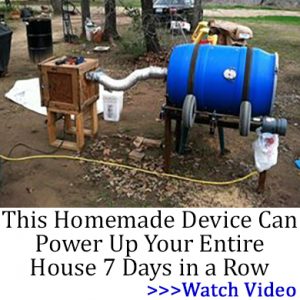 How to Hot-Wire a Car When The SHTF (with pictures)
How to Hot-Wire a Car When The SHTF (with pictures)
Pressurized Rainwater Harvesting and Purification System (Video)
Root Cellar Mistakes You Need To Avoid At All Costs

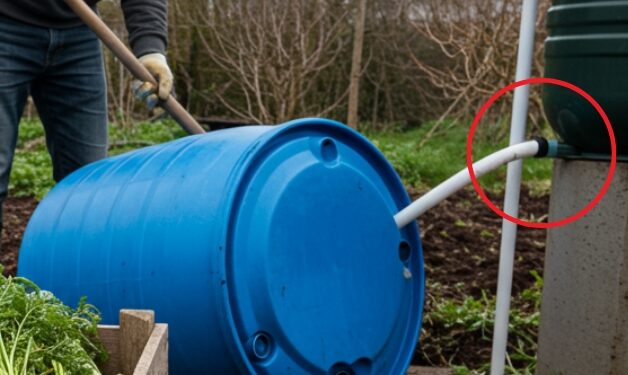









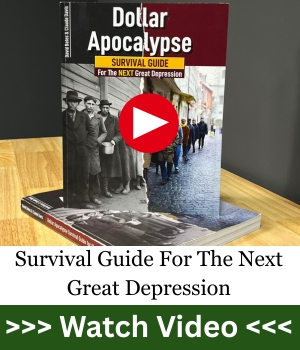



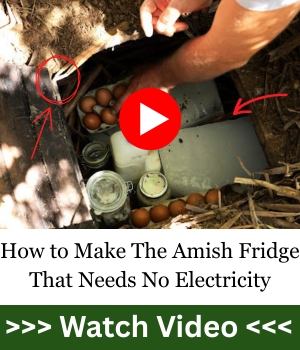

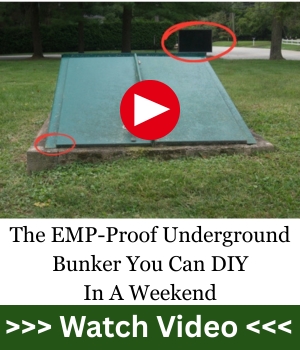






It is a good idea to put stuff in a barrel or some kind of container.
I will be looking to do just this, hide stuff in the ground or up in an old tree or a building, barn, under your hay bales. hint, hint…
There are many places to hide many, many things that will help you along on your way to survival.
One thing is, can I get to my supplies without being seen or getting killed while trying to get to my supplies.
Now do I tell anyone about the supplies that I have hidden, or do I keep it to myself, maybe tell loved ones. Know, who can I trust with this info, and will they steal it or go tell everyone they know.???????????????
Remember, “TRUST” will be life or death…
stay sharp
red ant
You bring up some very real points that a lot of folks overlook, it’s not just about hiding supplies, but being able to reach them safely when it matters most.
Stashing gear in multiple spots (like buried barrels, barns, or tree hollows) is smart. Redundancy gives you options if one location is compromised. But you’re absolutely right: access without being seen could be the difference between survival and disaster. Think about visibility, possible patrols or looters, and even natural threats.
As for who to tell, trust is huge. Sometimes even well-meaning people can slip up. Telling just a select loved one (ideally someone capable and on the same page) might make sense, especially if something happens to you. But it’s all about risk vs. reward. Once the info’s out, you can’t take it back.
Bottom line: hide smart, access safer, trust cautiously. You’re thinking like a survivor.
Just as said , best to never Tell , Never disclose, and never boast on Inet
Just do it
Dont Talk about it
the more Ego , the more problems
A Quite, Mild, humble , simple daminer is the best approach
like the old saying goes
if you speak like a fool you become that fool
so Quick to listen, Slow to speak , Slow the show what , who , how you are .
Simple proverbs , Truth needs no Defense , it always come out eventually
Plan , Prepare, be wise , quiet so you can have the advantage .
Hide in places which dont stand out and blend in like the enviornment your in . and not seen or heard , but as the area you live .
For some reason, this article talking about EMPs and items that would go down if we were hit with one made me think of something that had not occurred to me before. If any of you are auto mechanics, if you had a more modern vehicle that was computerized, is there a way to take out any computerized parts that could be damaged and cause your vehicle to not run and put those parts into a faraday cage, and then reinstall them after the EMP or would there just be too many parts to have to worry about? Clearly, it would have to be a situation where the vehicle was a spare that you didn’t need in every day use.
I would like to know this, too. I kinda think it would be one heck of a job to remove all computer stuff in a newish car, much less know how to put it all back together and reprogram the car. Also, you would have no access to the car if you need to drive it before dismantling it. Perhaps buy an older car, one that is not so completely controlled by computers…say from the early ’80’s??? Anyone??
Howdy from high in the desert swamp,
Most 70’s and all 80’s and later have electronic ignition. You have to go 60’s or earlier. With coil, points and condenser which can easily be removed and stored in foil. Easily put back in. The battery has to be protected as well. That’s all easy enough except finding an old car that doesn’t cost 35,000. I saw a 67 Galaxy 500 just like I had and it was a rust bucket/project car. They wanted $15,000. I went back a couple days later to haggle and someone else had bought it. This is all easy enough but you have to weigh electricity/grid destruction and if there will be gas or diesel.
That’s a great question, and yes, it’s possible, but not very simple.
Modern cars have a lot of electronic parts that could be damaged by an EMP, like the computer that runs the engine. In theory, you could remove some of those parts and store them in a Faraday cage to protect them, then reinstall them if needed. But there are two challenges:
There are many parts to consider, not just one or two.
Putting them back in might not be as easy as plugging them in, since some need special tools or programming.
That’s why many preppers prefer to keep an older vehicle (from before the 1980s) as a backup. Those cars have fewer electronics and are much easier to fix after an EMP.
So yes, it’s possible—but unless you’re really comfortable working on cars, a low-tech backup vehicle is probably the more reliable option.
That’s why we keep a 1960’s station wagon well maintained – no computors abord this baby.
Now that’s some old-school wisdom! A 1960s station wagon with no computers, no chips, no tracking, just pure mechanical reliability. If an EMP ever hits, you’ll be one of the few folks still able to roll out while the rest are scratching their heads over dead vehicles. Keeping that kind of backup ready is a seriously smart move, respect.
Recently two hikers found an old chest of gold coins, gold bars, and assorted pieces of jewelry buried in an Eastern European forest. This is what happens if you don’t have a really good Plan B in place.
Howdy from high in the desert swamp,
I have been in my location for 21 years. I just now had a casual conversation with a neighbor who has been here longer than me about being prepared. He was hesitant as well. It surprises me if I give a class on something as simple as building a fire how many men have never built one and don’t want to try and the women jump at the chance. Battle lines have now been drawn over ego. Me man. Me build fire. Women cook, have babies type nonsense ego. I have learned the hard way to not say a thing when others are talking about what they can do or even struggle with a task. I have men my age watch me intently just bbqing, Starting the fire seems to be fascinating. Ego is real. I have one. Not much anymore but I still do. I have to remember to keep my mouth shut and be dumb.
I can’t bury a barrel here. The water table is too high. It is a good article and when people aren’t trashing this site, I learn from the replies as much as the article. Putting barrels under hay bales is a good example.
Remember the Alamo, the enemy killed everybody
Remember North Carolina, the government was no help
Remember to have your soul prepared.
You can use SDR21 plastic pipe instead of a barrel. A 40″ long section of 12″ SDR will hold a lot of stuff and with the caps glued on correctly (you can use a threaded cap sealed with Teflon tape) is waterproof forever.
Everybody should watch Roger Mooking’s Man, Fire, Food show. He travels all over the country featuring people who have unique ways of making fire and cooking with it.
Our water table is to high for this but I licked the faraday cage problem I use a metal trash can for the corn that I feed the squirrel s I checked and if I put my phone in a plastic bad in the corn the cage works
Well said Chaplain, all valid points. Those last three lines should be reread by those afflicted with normalcy bias. If you bury a cache, be sure to “drop” an old pocket knife, a few coins, or corroded metal stuff an inch or two deep and above the cache. It may just throw someone with a metal detector off the track. Don’t forget a seed cache. Fruit trees/bushes, sunchokes, walking onions, and other long lasting crops could be a plus if your climate allows. Why would union civil war soldiers bayonet the gardens of the Confederate states inhabitants? Because the garden is sometimes where buried caches of valuables were hidden. Easy to blend in the recovery or hiding a few coins or the family silver/jewelry with the mundane task of weeding your garden.
Get copper BB’s and small steel ball bearings.. broadcast them all around the area. metal detectors will pick up the signal, but it will be interpreted as a false signal. A wide enough area, and people will give up looking.
Very good idea.
I think a junk yard would be a good place to hide stuff.
Stay sharp
red ant
Father-in-law buried a chest freezer in his back yard for a root cellar. It worked because he had no problems with the water table, placed gravel below and around the unit, and topped it off with thick overlapping plastic to drain rain/snow water away from the units lid. Inside he had wire baskets with rope handles so he could lift the produce up to his level without laying on the ground. He also never let anything, other than brick spacers, lay on the bottom of the cellar. He was in his 80’s when he did this and used it effectively for the next ten years. The people that bought the place viewed it as a positive thing, last I heard it was still used.
I have purchased large pickle barrels they stand about 4′ tall 2′ wide with screw on lids, 12″ across with a rubber ring inside to seal them. These barrels are heavy, about 30 pounds empty and the plastic is thick. I doubt any creature could chew through them. If you get them, they will need to be washed out unless you like a strong pickle smell mingled with your food. Have had these for over 5 years and no problems, top buried 8″below grade.
Living in the North East poses a problem. Ground freezes 3 to 4 feet, thus a barrel with vacuum sealed canning jars would need a seven foot deep hole for food. Does not apply to non-perishables. Two inch rigid foam insulation might allow less depth but only God knows.
There is a thing called an EMPShield.com that is Mil spec approved for use to protect your home as well as generator and anything connected to solar panels, inverter and batteries. You can even get a $50 discount use code Ken50. I have this on all my electronics at home on both the AC and DC sides. The AC side is only about $350 and easily installed. DC might need an electrician and will be $800 or so because there are two components instead of one but for just over $1000 you’re totally protected. Buy as two separate orders to get the full $100 off. When you google empshield there will be a scam warning as well as lots of other links. I can assure this is not a scam – check it out – mil spec approved and you can call them. The military has actually installed them on some facilities.
While EMP Shield devices are marketed as military-grade protection against electromagnetic pulses (EMPs) for homes, vehicles, and solar systems, there are valid concerns about their effectiveness and value.
1. Questionable Internal Components
Some users have reported that the internal components of EMP Shield devices are minimal. For instance, a reviewer on Amazon described the device as containing a small circuit board primarily for powering an LED, encased in filler material to add weight, suggesting limited functionality beyond basic surge protection.
2. Skepticism from the Engineering Community
Professionals in electrical engineering have expressed doubts about the product’s claims. On forums like Reddit, some have labeled EMP Shield as ineffective, arguing that true EMP protection requires comprehensive shielding, such as a Faraday cage, which these devices do not provide.
3. Mixed Test Results
While EMP Shield states that their products meet certain military standards, independent testing has yielded mixed outcomes. Some tests indicate potential effectiveness against simulated EMP events, but others question the reliability of such devices in real-world, high-intensity scenarios.
(tests done by MOS Equipment and Prepper Hideout)
4. Cost vs. Benefit
The price point of EMP Shield devices is relatively high, with home protection units around $350 and vehicle units approximately $800. Given the uncertainties about their effectiveness, some consumers may find it challenging to justify the investment.
5. Alternative Protection Methods
Experts often recommend traditional methods for EMP protection, such as using Faraday cages or storing critical electronics in shielded containers, which can be more cost-effective and have a proven track record.
In summary, while EMP Shield offers products claiming to protect against EMPs, potential buyers should carefully evaluate the available evidence and consider alternative protection methods before making a purchase.
Missouri prep –
its too much trouble, to give a simple answer. too many different vehicles, with too many variables. start with an OLDER vehicle would be easier to answer. Dad converted a 79 Nova back to points from electronic ignition by installing a distributor from a ’66 malibu. Best method, get a pre ’70 almost anything, check it over before you buy. How far do you plan to drive, if 99% of all cars wont run ? Gas stations are closed. NO electric grid.
Where do you plan to drive to ? Why ? is this a one time relocation, or commute to work ?
A 1960’s or older Farm tractor might solve all your actual needs. If you plan to move more than a FEW miles after SHTF, I suggest you consider flight lessons and purchase a pre 1990 Airplane, limited carry capacity, but it will get a couple of you out of Fargo and into the memphis area – less COLD. 6 months of fire wood and 3 months of growing, just NOT a place to stay after real SHTF. Georgia Carolina Kentucky all sound real nice in long term SHTF conditions. Perhaps NOW a few flight lessons make more sense than they did yesterday
A friend of mine who builds hot rods was going on about buying a new Land Rover, I asked why he wanted a vehicle with such a piece of crap British aluminum engine. Said he liked the looks of the Land Rover and didn’t care about the engine because he was going to put in an 800 horse Chevrolet engine he was building. And he did. It’s amazing what all these old rural Texas shade tree mechanics are always doing. There’ll be no shortage of running cars out here in the countryside after SHTF.
That’s the spirit of true self-reliance right there! Shade tree mechanics like your friend are exactly the kind of folks who will keep things running when everything else grinds to a halt. Swapping a fragile engine for an 800 hp Chevy powerhouse? That’s next-level ingenuity—and exactly why rural communities are going to be far more resilient when SHTF. Out in the countryside, it’s not just about surviving—it’s about thriving with whatever you’ve got on hand.
I would like to share some thoughts i was thinking a month or so ago. Would a sunken trashcan or something similar to be used as a one week radiation shelter for one person ? Like can a person sit in a chair for a week ? Can a person be in a very confined space and survive ? I think it could be a cheap….better than nothing…..prep a person could have near by when and if the big one hits…..Build it for your mother on Mothers Day….
That’s a really creative and practical line of thinking! Using a sunken trashcan or similar container as a makeshift fallout shelter definitely falls into the “better than nothing” category, especially if it’s well-lined and buried deep enough with soil or other dense material for radiation shielding. While it wouldn’t be comfortable, surviving in a confined space for a week is possible if you plan ahead: enough water, non-perishable food, some ventilation, and ways to manage waste would all be key.
It’s also a great reminder that prepping doesn’t have to be expensive or elaborate to be effective. Even a small, personal shelter like that could make a huge difference in an emergency.
I also thought about jumping into my septic tank….I know….I know…you would rather die…some prepper you are….☮
This mourning i wake up to the thoughts of all those safety videos i watch at work about confined spaces and the dangers of carbon dioxide poisoning….all the sign’s that went up that said do not enter…which we used to enter all the time…a deep dumpster dive into safety i guess would be advisable before thinking about living in a garbage can. Just ask Oscar ☺
Monoxide???
Before turning any kind of container into a makeshift shelter, a deep dive into proper ventilation, structural integrity, and emergency access is a must. Oscar the Grouch might’ve been cool living in a trash can, but in the real world, it’s a whole different ballgame. Thanks for raising an important flag, prepping smart means prepping safe. And yes, it is monoxide.